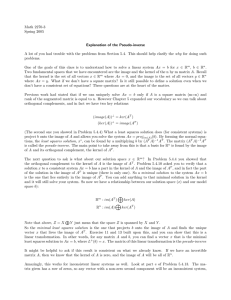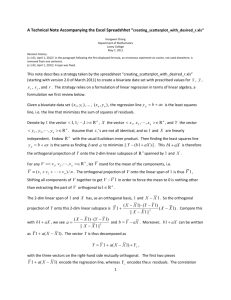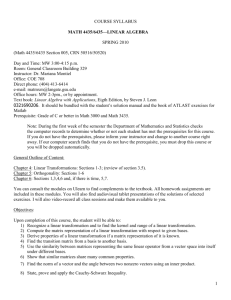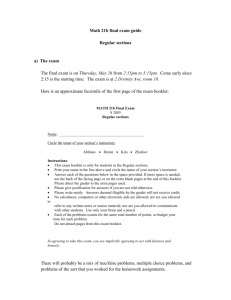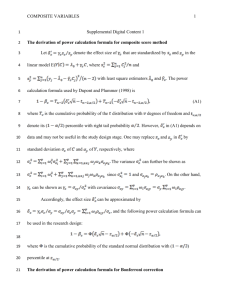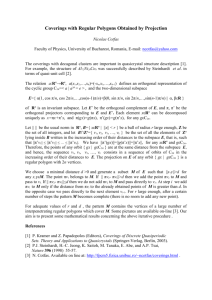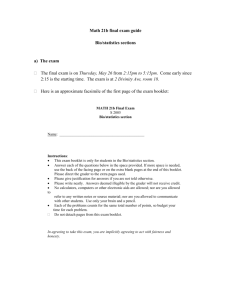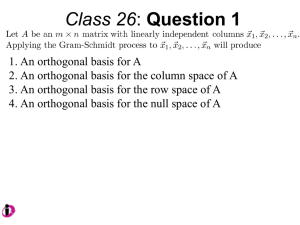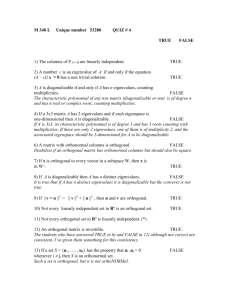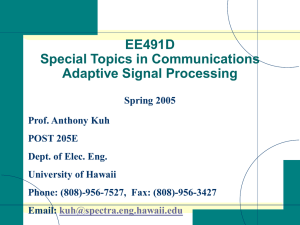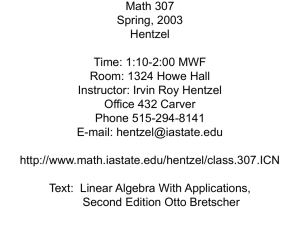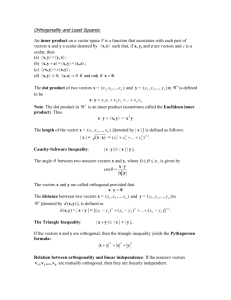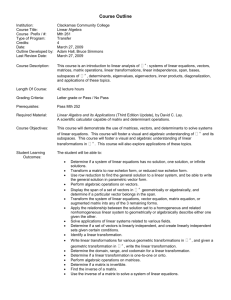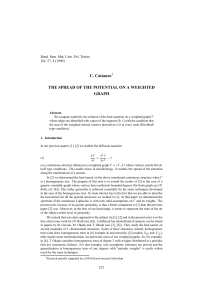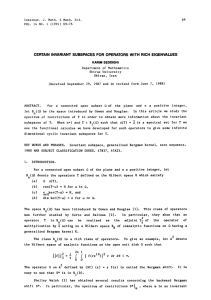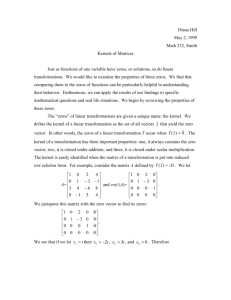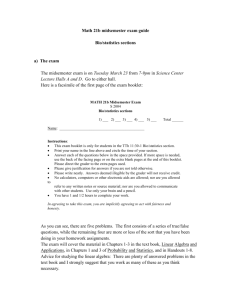Math 21b Midsemester Exam
advertisement
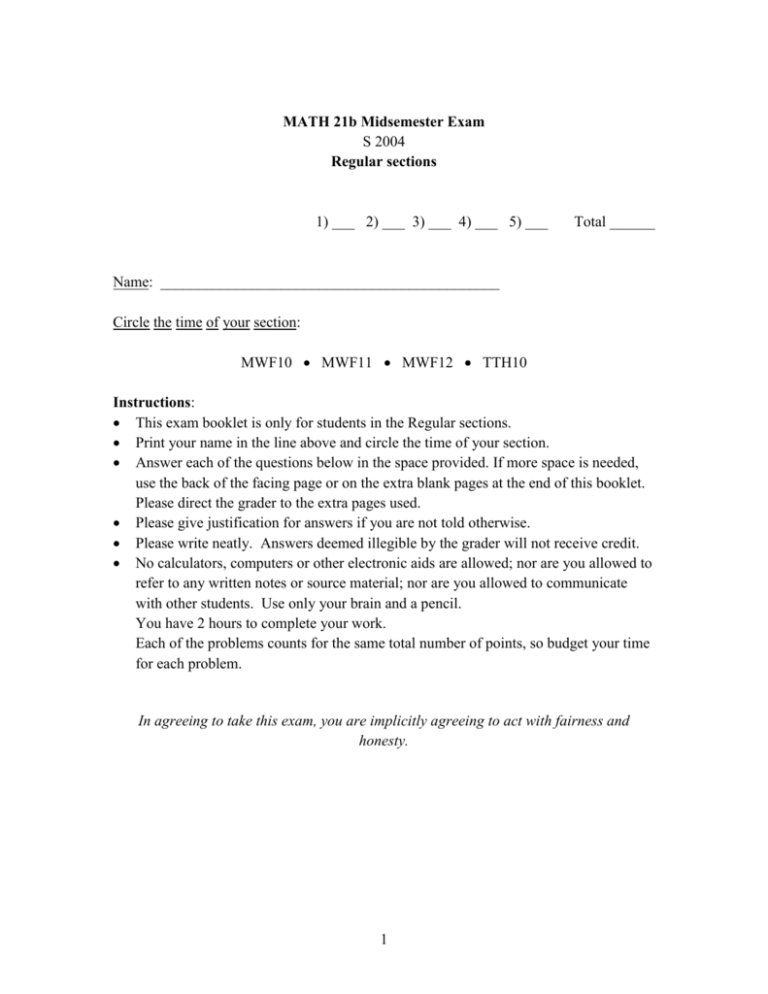
MATH 21b Midsemester Exam
S 2004
Regular sections
1) ___ 2) ___ 3) ___ 4) ___ 5) ___
Total ______
Name: _____________________________________________
Circle the time of your section:
MWF10 MWF11 MWF12 TTH10
Instructions:
This exam booklet is only for students in the Regular sections.
Print your name in the line above and circle the time of your section.
Answer each of the questions below in the space provided. If more space is needed,
use the back of the facing page or on the extra blank pages at the end of this booklet.
Please direct the grader to the extra pages used.
Please give justification for answers if you are not told otherwise.
Please write neatly. Answers deemed illegible by the grader will not receive credit.
No calculators, computers or other electronic aids are allowed; nor are you allowed to
refer to any written notes or source material; nor are you allowed to communicate
with other students. Use only your brain and a pencil.
You have 2 hours to complete your work.
Each of the problems counts for the same total number of points, so budget your time
for each problem.
In agreeing to take this exam, you are implicitly agreeing to act with fairness and
honesty.
1
Problem 1.
Circle T if the given assertion is true, and circle F if it is false. There is no need to
justify your answer.
T F a)
T F b)
T F c)
A3.
T F d)
T F e)
T
T
T
T
F
F
F
F
f)
g)
h)
i)
T F j)
1
Let A =
0
0
1
and B =
0
2
1
1
. Then AB = BA.
Suppose u is a non-zero vector in Rn. The map of Rn to itself that sends
any given vector v to T( v ) = v + u is a linear transformation.
For any square matrix A, the kernel of A2 is a subspace of the kernel of
If T: Rn Rm and S: Rm Rn are linear transformations such that the
kernel of S has dimension greater than zero, then the kernel of ST must
have dimension greater than zero.
If a system of linear equations has more unknowns then equations, there
are always an infinite number of solutions.
If the product of two matrices is 0, then one or the other must also be 0.
If A is a matrix, then ker(A) must be the same subspace as ker(rref(A)).
If A is a matrix, then image(A) must be the same as image(rref(A)).
If A is a square matrix with linearly independent columns, then the rows
are also linearly independent vectors.
6
2
2
2
A linear transformation of R2 cannot send to and to .
9 3
3 1
2
Problem 2.
1
1
1
0
Let T denote a linear transformation of R2 that sends to and to .
3 2
2 1
a)
0
1
1
What are the coordinates of with respect to the basis v 1 = and v 2 = .
1
3
2
1
1
b) Write down the matrix of T with respect to the basis v 1 = and v 2 = .
3
2
1
0
c) Write down the matrix of T with respect to the standard basis, and .
0
1
3
Problem 3.
1
1
Let A denote the matrix
2
3
a)
b)
c)
d)
5
2
0
2
2
1
1
0
4
1
1
3
6
1
1
0
Compute rref(A).
Give a basis for kernel(A).
Give a basis for image(A).
What is the dimension of kernel(AT)?
4
.
Problem 4.
1
Let A denote the matrix 0
1
2
1 .
0
a) Give an orthonormal basis for the image of A.
b) Give the matrix T (with respect to the standard basis of R3) that represents the
orthogonal projection onto the image of A.
c) Let v 1, v 2 denote any orthonormal basis for image(A), and let v 3 denote a unit
length vector that is orthogonal to image(A). Find the matrix with respect to the
basis { v 1, v 2, v 3} for the orthogonal projection to image(A).
d) Write a non-zero vector that is orthogonal to image(A).
e) Write down the matrix (with respect to the standard basis of R3) that represents the
orthogonal projection onto the orthogonal complement of image(A).
5
Problem 5.
Let T: R3 R3 denote the linear transformation whose matrix with respect to the
1
standard basis of R3 is A = 2
3
2
3
3
2 .
1
2
1
Meanwhile, let v 1 = 0 , v 2 =
2
a) Compute A2.
b) Prove that v 1, v 2, and v 3 are a basis for R3.
c) Write down the vector A v 1.
6
1
1 , v 3 =
3
1
1.
1
